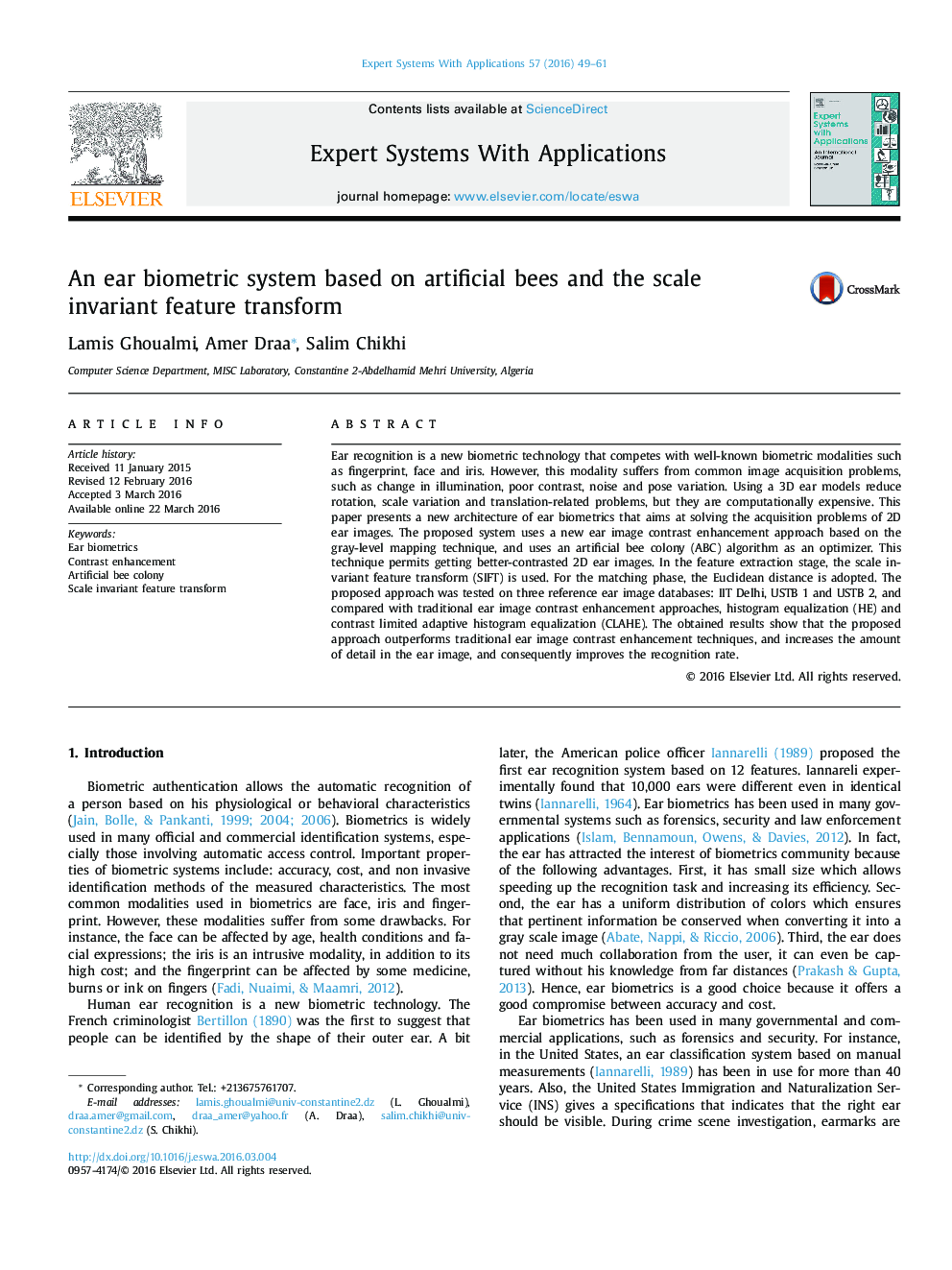| Article ID | Journal | Published Year | Pages | File Type |
|---|---|---|---|---|
| 381962 | Expert Systems with Applications | 2016 | 13 Pages |
•An ear biometric system based on artificial bees for ear image contrast enhancement is proposed.•In the feature extraction stage, the scale invariant feature transform is used.•The proposed approach was tested on three databases of ear biometrics: IIT Delhi, USTB 1 and USTB 2.•The obtained results proved the superiority of the proposed in two out of three test databases.
Ear recognition is a new biometric technology that competes with well-known biometric modalities such as fingerprint, face and iris. However, this modality suffers from common image acquisition problems, such as change in illumination, poor contrast, noise and pose variation. Using a 3D ear models reduce rotation, scale variation and translation-related problems, but they are computationally expensive. This paper presents a new architecture of ear biometrics that aims at solving the acquisition problems of 2D ear images. The proposed system uses a new ear image contrast enhancement approach based on the gray-level mapping technique, and uses an artificial bee colony (ABC) algorithm as an optimizer. This technique permits getting better-contrasted 2D ear images. In the feature extraction stage, the scale invariant feature transform (SIFT) is used. For the matching phase, the Euclidean distance is adopted. The proposed approach was tested on three reference ear image databases: IIT Delhi, USTB 1 and USTB 2, and compared with traditional ear image contrast enhancement approaches, histogram equalization (HE) and contrast limited adaptive histogram equalization (CLAHE). The obtained results show that the proposed approach outperforms traditional ear image contrast enhancement techniques, and increases the amount of detail in the ear image, and consequently improves the recognition rate.
